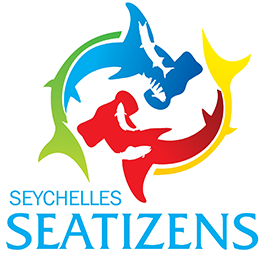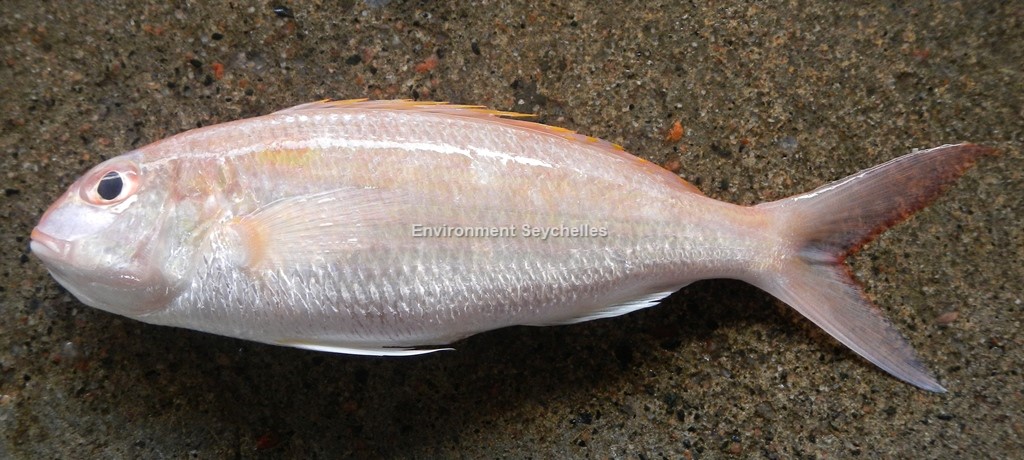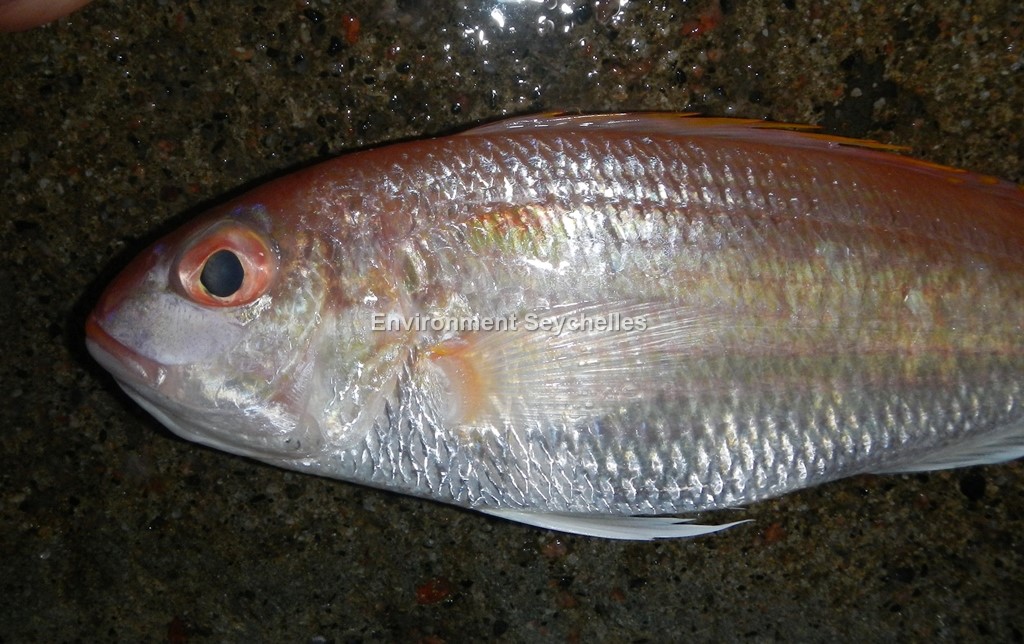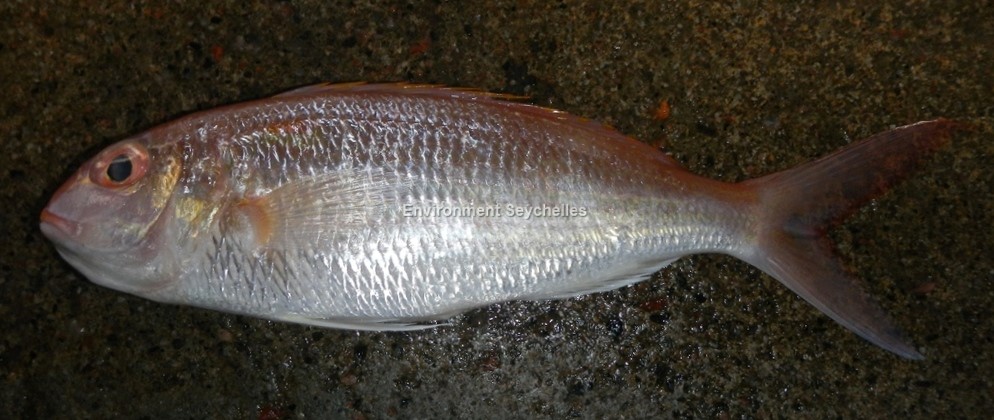Description:
Dorsal spines: 10; Dorsal rays: 9; Anal spines: 3; Anal rays: 7.
Elongate, moderately full bodied, fusiform fish. Snout short with steep profile. Snout length about equal to diameter of eye. Mouth terminal with 3 or 4 pairs of small recurved canines anteriorly in upper jaw. Maxilla reaching only to vertical line below anterior of eye. Preopercle with 3 transverse scale rows. Dorsal-fin spines elongate, interspinous membrane deeply incised. Pectoral fins short, not reaching to level of anus. Pelvic fins moderately long, reaching to level of anus. Caudal fin forked, upper lobe of caudal fin pointed and slightly longer than lower.
Colour. Upper part of body pinkish, with 7 or 8 indistinct darker pink saddles reaching to or just below the lateral line. Lower part of body silvery, with faint golden lines following each scale row. A diffuse pale reddish-gold spot below and just behind origin of lateral line. Golden-yellow stripe on snout in front of eye. Upper lip yellowish. Suborbital silvery-mauve. Preopercle and opercle with yellow highlights. Dorsal fin pale whitish-pink, with a pale yellow line or series of spots just above base, spinous tips reddish-yellow. Anal fin whitish-pink, with median pale yellow band. Pelvic fins whitish. Pectoral fins translucent. Caudal fin pinkish.
Size:
Maturity: Lm unknown. Range unknown. Max Length: 29cm SL. Commonly to 17cm SL.
Habitat and Ecology:
A benthic species, found on sand or mud bottoms (depth 17-100m). Feeds on fish, crustaceans, molluscs and polychaetes. Body size appears to increase with depth with males being relatively larger than females. Usually in small groups.
Fishery Status:
This species is not protected or subject to fishery regulations. It is caught in net fisheries but is an uncommon component of the catch.
Notes:
References:
Froese, R. & D. Pauly. Eds. 2019. FishBase. https://www.fishbase.in/summary/Nemipterus-peronii (05/08/19).
Russell, B.C. 1990. FAO Species Catalogue. Vol. 12. Nemipterid fishes of the world. (Threadfin breams, whiptail breams, monocle breams, dwarf monocle breams, and coral breams). Family Nemipteridae. An annotated and illustrated catalogue of nemipterid species known to date. FAO Fish. Synop. 125(12):149p. Rome: FAO.
Russell, B. et al 2016. Nemipterus peronii. The IUCN Red List 2016: e.T46087000A46664769. http://dx.doi.org/10.2305/IUCN.UK.2016-3.RLTS.T46087000A46664769.en. (05/08/19).
Citation:




Enjoyed every bit of your blog.Thanks Again. Much obliged.
Very neat blog.Really looking forward to read more. Cool.
Very good blog.Much thanks again. Keep writing.
Very good post.Thanks Again. Cool.
This is one awesome blog post. Want more.
Thank you for your article post.Thanks Again. Keep writing.
Major thanks for the blog article.Really looking forward to read more. Fantastic.
Say, you got a nice article. Will read on…
I really enjoy the post.Thanks Again. Really Cool.
I value the post.Much thanks again. Cool.
Really informative article post.Really looking forward to read more. Really Great.
Im thankful for the blog.Really looking forward to read more. Great.
Thanks so much for the article post.Really looking forward to read more. Great.
I loved your post. Great.
Very neat blog article.Really looking forward to read more. Fantastic.
Very neat blog article. Fantastic.
Thanks for sharing, this is a fantastic blog.Thanks Again. Will read on…
Thanks a lot for the article post. Cool.
Thank you ever so for you post.Really looking forward to read more. Fantastic.
Say, you got a nice blog article.Much thanks again. Cool.
Thanks-a-mundo for the blog article.Really thank you! Really Great.
Thanks for the article post.Much thanks again. Really Great.
Great post.
I appreciate you sharing this blog post.Much thanks again. Will read on…
Thanks for the blog article.Much thanks again. Great.
Wow, great post.Really thank you! Much obliged.
Really informative article post.Really looking forward to read more.
Very neat post.Really thank you! Want more.